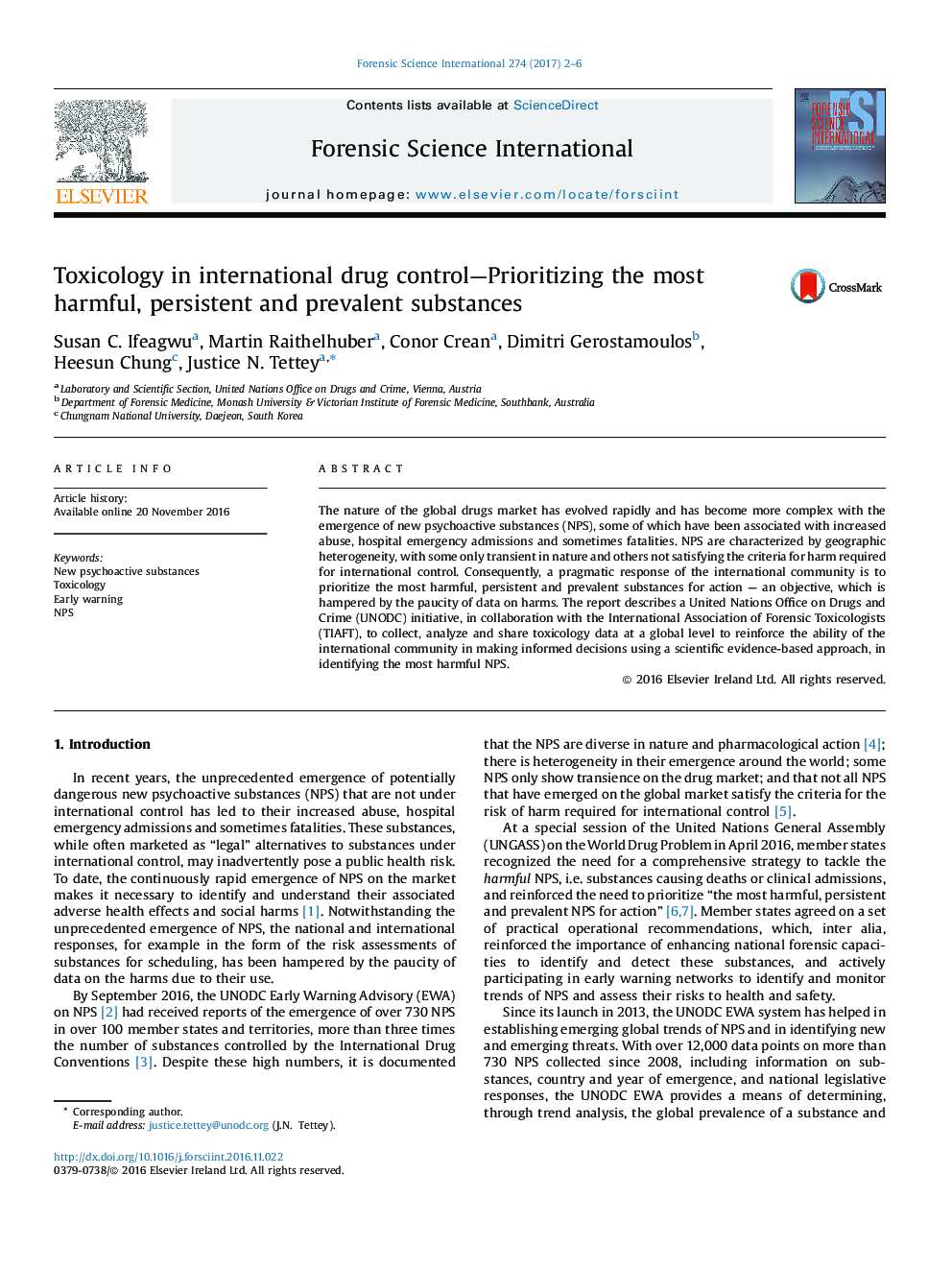| کد مقاله | کد نشریه | سال انتشار | مقاله انگلیسی | نسخه تمام متن |
|---|---|---|---|---|
| 6462480 | 1421976 | 2017 | 5 صفحه PDF | دانلود رایگان |
کلمات کلیدی
1.مقدمه
2.روش شناسی
2.1.طرح مطالعه
3.نتایج
4.بحث
جدول 1. خلاصه ای از داده های کلیدی حاصل از مطالعه آزمایشی
جدول 2. یک مثال از مورد استفاده از مواد مخدر (یا مواد چندگانه) از گروه اصلی.
شکل 1، فرکانس NPS مربوط به موارد پس از مرگ در مطالعات آزمایشی
شکل 2، ابزار جمع آوری داده های سم شناسی نهایی NPS
5.نتیجه گیری
ضمیمه A. داده های اضافی
The nature of the global drugs market has evolved rapidly and has become more complex with the emergence of new psychoactive substances (NPS), some of which have been associated with increased abuse, hospital emergency admissions and sometimes fatalities. NPS are characterized by geographic heterogeneity, with some only transient in nature and others not satisfying the criteria for harm required for international control. Consequently, a pragmatic response of the international community is to prioritize the most harmful, persistent and prevalent substances for action - an objective, which is hampered by the paucity of data on harms. The report describes a United Nations Office on Drugs and Crime (UNODC) initiative, in collaboration with the International Association of Forensic Toxicologists (TIAFT), to collect, analyze and share toxicology data at a global level to reinforce the ability of the international community in making informed decisions using a scientific evidence-based approach, in identifying the most harmful NPS.
Journal: Forensic Science International - Volume 274, May 2017, Pages 2-6
